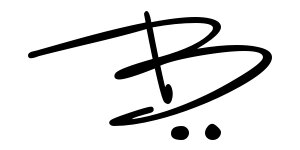About the makes & the maker
Artist Statement
Over the years, I have dabbled in embroidery, sewing, colored pencil, acrylics, beading, found object sculpture, jewelry crafting, collage, knitting, needlepoint, paper craft, macrame, ... to many to name (or remember!).
I am inspired by the shapes and colors of nature, and especially the beauty you find in or near the ocean. I am so lucky to live a literal 300 yards from the Pacific Ocean in a dreamy little beach town just south of San Francisco. I can hear the ocean waves breaking from my backyard and smell the salt air as I sit and write this.
I have been playing with polymer clay since 2007. I usually create whimsical object d’art and one-of-a-kind jewelry pieces, often featuring creepy-cute and fantasy aesthetics. I am inspired by the shapes and colors of nature, especially the beauty all around me.
I have spent many hours experimenting with polymer clay and combining it with various mixed media. I find myself going through phases of making, and so my stock changes with my fancy. For a while I was strictly jewelry, then hair adornments, later it was making pieces to go into terrariums, and then octopus statement necklaces. Lately it has been stash jars. I wonder what is coming next.
In 2019 I discovered the art of copper electroplating. The learning curve has been quite steep. The trials and tribulations have been worth it! The jewelry and curiosities I have been able to create fill me with joy.
What’s with your jewelry names?
While a necklace called a ‘mahogany twig necklace’ might be descriptive, it is super boring. I run common words through an english-to-Elvish dictionary to come up with the names. The elvish language I use is Quenya from the Tolkein universe, so, for example, ‘branch’ becomes ‘olwa’.
What is copper electroplating/electroforming?
Copper plating is the process of plating a layer of copper electrolytically on the surface of an item. It takes place in an electrolytic cell where electrolysis which uses direct electric current to dissolve a copper rod and transport the copper ions to the item. Into a container of water are placed a copper rod, and the item. The water contains an ionic solution which allows a direct electric current to flow from the copper rod to the item. The copper rod is the anode and the item is the cathode. This current flow causes the copper to ionize, become oxidized which means each atom becomes positively charged by losing an electron. As the copper ions dissolve into the water, they form a coordination complex with salts already present. The copper then physically flows to the item, where it is reduced to the metallic state by gaining electrons. This forms a thin, solid, metallic copper film on the surface of the item [source].
There is a difference between electroplating and electroforming. Ectroplating is a thin layer of copper that is transferred onto a metal object. Electroforming is the term used when a non-metallic item is plated in metal after a coating in (in my case) a graphite paint.
What is polymer clay?
Polymer clay is a type of hardenable modeling clay based on the polymer polyvinyl chloride (PVC). It typically contains no clay minerals, but like mineral clay a liquid is added to dry particles until it achieves gel-like working properties, and similarly, the part is put into an oven to harden, hence its colloquial designation as clay. Polymer clay is generally used for making arts and craft items, and is also used in commercial applications to make decorative parts. Art made from polymer clay can now be found in major museums [source]. I generally use Premo and Cosclay in my works.


